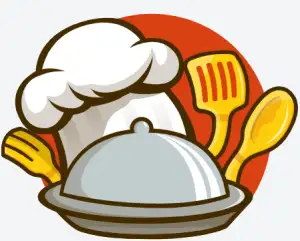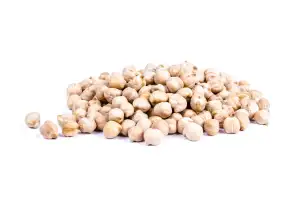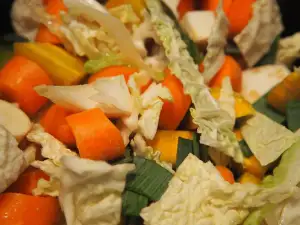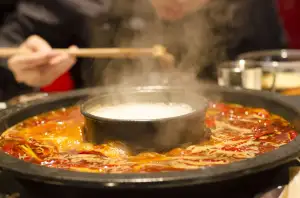Mastering the Art of Broiling: Unleashing the Flavors with this Sizzling Cooking Technique
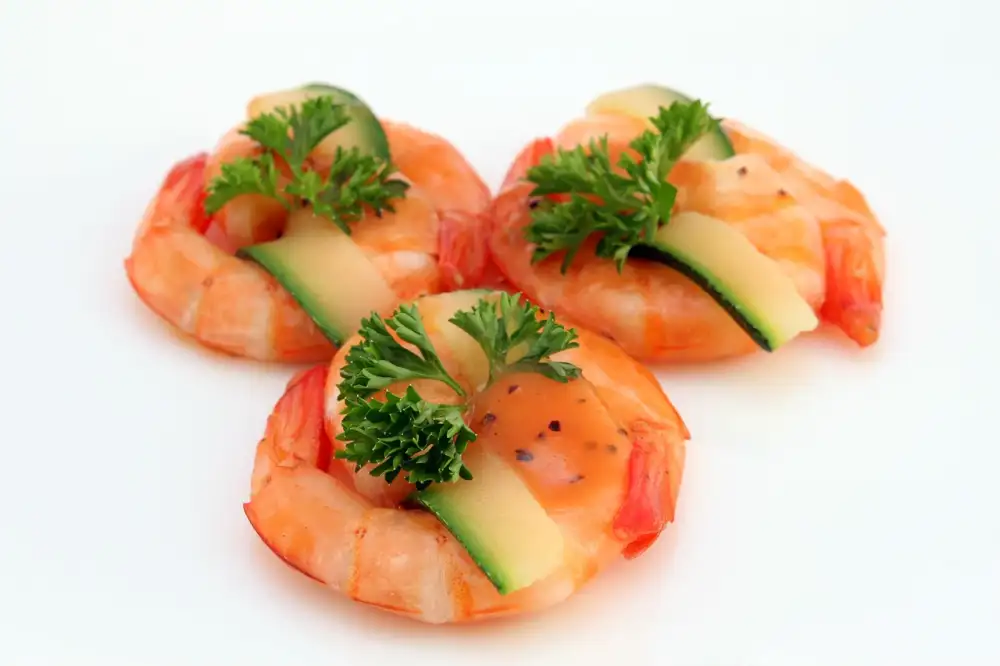
Broiling is a cooking technique that can truly elevate your culinary skills and unleash a whole new world of flavors. Whether you are a seasoned chef or an amateur cook, mastering the art of broiling will allow you to create sizzling dishes that are both delicious and visually appealing.
In this article, we will explore the ins and outs of broiling, from its definition to how it works, as well as the benefits it offers. We will also delve into the equipment needed for broiling, the steps involved in the process, and provide some tips for successful broiling. Additionally, we will discuss popular foods that can be broiled and explore variations of broiling techniques.
By the end of this article, you will have a comprehensive understanding of broiling and be inspired to embrace this exciting cooking technique in your own kitchen. So let's dive in and discover how to unleash the flavors with the sizzling art of broiling!
Definition of Broiling
Broiling is a high-heat cooking method that involves exposing food to direct heat from above. It is a quick and efficient way to cook food, resulting in a deliciously caramelized exterior and a juicy interior. Unlike grilling, which uses direct heat from below, broiling uses intense heat from above to cook the food. This technique is commonly used for cooking meats, seafood, vegetables, and even desserts. By harnessing the power of intense heat, broiling allows for the development of rich flavors and enticing textures in your culinary creations.
How Broiling Works
Broiling is a cooking technique that involves exposing food to direct heat from above. In this method, the heat source is usually located at the top of the oven, near the broiler element. When you turn on the broiler, it generates intense heat that quickly cooks and browns the food.
The high temperatures achieved during broiling cause the surface of the food to caramelize and develop a delicious crust. The heat also penetrates deep into the food, ensuring even cooking throughout. This makes broiling an excellent choice for thin cuts of meat, fish fillets, and vegetables.
Unlike other cooking methods that rely on indirect heat or convection currents, broiling works by directly transferring heat energy to the food. As a result, broiled foods cook faster than when using methods like baking or roasting. It's important to keep a close eye on your food while broiling to prevent burning or overcooking.
The proximity of the food to the heating element is crucial in determining how quickly it cooks and how well it browns. For example, placing food closer to the broiler will result in faster cooking and more browning, while moving it farther away will slow down the process.
Understanding how broiling works allows you to harness its power to create mouthwatering dishes with perfectly caramelized exteriors and juicy interiors. So let's dive deeper into this sizzling cooking technique and explore its benefits and various applications.
Benefits of Broiling
Broiling offers a multitude of benefits that make it a popular cooking technique. Firstly, broiling is a quick and efficient method as it uses direct heat from above, allowing food to cook rapidly. This means you can have a deliciously charred steak or perfectly melted cheese in just minutes.
Secondly, broiling helps to retain the natural flavors and juices of the food. The intense heat seals in the moisture, resulting in tender and succulent dishes. Whether it's juicy chicken breasts or caramelized vegetables, broiling enhances the taste and texture of your ingredients.
Another advantage of broiling is that it requires minimal added fats or oils. The high heat quickly renders out excess fat from meats, making it a healthier option compared to frying or sautéing. It's an ideal cooking method for those looking to reduce their calorie intake without compromising on flavor.
Furthermore, broiling creates a beautiful caramelization on the surface of foods. This browning effect not only adds visual appeal but also imparts a rich and complex flavor profile. From crispy golden crusts on casseroles to charred edges on fish fillets, broiling elevates the taste and appearance of your dishes.
Lastly, broiling is versatile and suitable for a wide range of ingredients. Whether you're cooking meat, seafood, vegetables, or even fruits, this cooking technique can be applied to various foods with great results. You can experiment with different flavors and combinations to create unique and delicious meals.
In summary, the benefits of broiling include fast cooking time, enhanced flavors and textures, reduced use of fats/oils, beautiful caramelization, versatility in ingredient choices. With these advantages in mind, it's no wonder that broiling has become an essential skill for any aspiring home cook.
Equipment Needed for Broiling
To master the art of broiling, you'll need a few essential pieces of equipment. First and foremost, a broiler pan is a must-have. This specialized pan consists of a slotted top tray and a bottom drip tray to catch any excess fat or juices. The slotted top allows for even heat distribution and promotes the perfect sear on your food.
Additionally, you'll need a pair of tongs or a spatula to flip your food during the broiling process. These tools will ensure that your food cooks evenly on both sides and prevents any potential burning.
To monitor the internal temperature of your food, an instant-read thermometer is indispensable. This tool helps you achieve the desired level of doneness without overcooking or undercooking your dish.
Lastly, make sure to have oven mitts or heat-resistant gloves on hand to protect yourself from burns when handling hot pans or adjusting the oven rack.
By having these essential equipment items ready in your kitchen, you'll be well-prepared to unleash the flavors and sizzle with confidence using the broiling technique.
Steps to Broiling
1. Preheat the broiler: Start by preheating your broiler for about 10 minutes. This ensures that it reaches the desired temperature for optimal cooking.
2. Prepare the food: While the broiler is preheating, prepare your food by seasoning it with salt, pepper, and any other desired spices or marinades. Ensure that the food is evenly coated for maximum flavor.
3. Arrange on a broiler pan: Place the seasoned food on a broiler pan or a baking sheet lined with aluminum foil. This helps to catch any drippings and makes cleanup easier.
4. Adjust the rack position: Position the oven rack so that the food will be approximately 2-3 inches away from the heat source. This allows for even cooking and prevents burning.
5. Place under the broiler: Carefully place the broiler pan with the food in the oven, ensuring that it is centered directly under the heat source.
6. Monitor and flip if necessary: Keep a close eye on your food as it cooks under the broiler. Depending on its thickness and desired doneness, you may need to flip it halfway through cooking to ensure even browning.
7. Cook to perfection: Allow your food to cook under the broiler until it reaches your desired level of doneness. This can vary depending on personal preference and recipe instructions.
8. Remove from heat and let rest: Once cooked, carefully remove your food from under the broiler using oven mitts or tongs. Allow it to rest for a few minutes before serving to allow juices to redistribute and flavors to develop further.
Remember, practice makes perfect when it comes to mastering the art of broiling. With time and experience, you'll become more familiar with how different foods respond to this sizzling cooking technique.
Tips for Successful Broiling
To ensure successful broiling, follow these tips:
1. Preheat the broiler for at least 5 minutes to ensure even cooking.
2. Use a broiler pan or a baking sheet lined with foil to catch any drippings and prevent flare-ups.
3. Position the rack so that the food is about 4-6 inches away from the heat source for optimal browning.
4. Flip the food halfway through cooking to ensure even browning on both sides.
5. Baste the food with marinades or sauces during cooking to enhance flavor and prevent drying out.
6. Keep a close eye on the food as it can quickly go from perfectly browned to burnt under the intense heat of the broiler.
7. Use a meat thermometer to ensure that meats are cooked to their desired doneness.
8. Allow the food to rest for a few minutes after broiling to allow juices to redistribute and flavors to develop further.
By following these tips, you'll be able to achieve deliciously caramelized and flavorful results every time you broil!
Popular Foods to Broil
Broiling is a versatile cooking technique that can be used to prepare a wide range of delicious dishes. Some popular foods that are perfect for broiling include steak, chicken breasts, fish fillets, shrimp, and vegetables. The intense heat from the broiler caramelizes the surface of these foods, creating a flavorful crust while keeping the insides tender and juicy. You can also broil burgers, pork chops, lamb chops, and even fruits like pineapple or peaches for a unique twist. Whether you prefer meat, seafood, or veggies, broiling is sure to enhance the flavors and elevate your culinary creations to new heights.
Variations of Broiling Techniques
While broiling is a straightforward cooking technique, there are various ways to add creativity and enhance the flavors when using this method. Here are some variations of broiling techniques that you can experiment with:
1. Direct Broiling: This is the traditional method where the food is placed directly under the heat source. It is perfect for thin cuts of meat, fish fillets, and vegetables that cook quickly.
2. Indirect Broiling: In this technique, the food is placed on a rack or a pan slightly away from the heat source. This allows for slower cooking and ensures even heat distribution. It works well for thicker cuts of meat or delicate foods that require gentle cooking.
3. Reverse Broiling: This technique involves starting the cooking process by searing the food in a hot skillet or grill pan before transferring it to the broiler to finish cooking. It adds a beautiful crust and enhances the flavor profile.
4. Marinated Broiling: Marinating your food before broiling can infuse it with delicious flavors and tenderize tougher cuts of meat. The marinade helps to keep the food moist during high-heat cooking.
5. Glazed Broiling: Applying a glaze or sauce to your food before broiling can create a caramelized and flavorful crust. Brushing on ingredients like honey, soy sauce, or barbecue sauce adds depth and richness to your dish.
6. Double-Sided Broiling: For certain foods like thick steaks or chops, you can flip them halfway through the cooking process to ensure even browning on both sides.
By experimenting with these variations, you can unlock new possibilities and tailor your broiled dishes to suit your taste preferences. Don't be afraid to get creative and try different combinations of seasonings, marinades, and glazes to elevate your broiled creations!
Safety Precautions for Broiling
1. Always ensure that your broiler is clean and free from any grease or debris before using it. This will prevent any potential flare-ups or accidents.
2. Use oven mitts or heat-resistant gloves when handling hot broiler pans or trays to avoid burns.
3. Keep a close eye on the food while broiling to prevent it from burning or charring. It's best to stay in the kitchen and not leave the area unattended.
4. Make sure that the broiler is properly ventilated to avoid smoke buildup. Open windows or turn on the exhaust fan to maintain good air circulation.
5. Avoid using aluminum foil or any other materials that are not designated as safe for broiling, as they can melt or catch fire.
6. When placing food in the broiler, make sure it is positioned at a safe distance from the heating element to prevent excessive splattering or dripping onto the element.
7. If using a broiler pan with a removable rack, ensure that it is securely in place before placing food on top of it.
8. Use long-handled tongs or spatulas when flipping or removing food from the broiler to avoid getting too close to the high heat source.
9. Allow the broiler and its components to cool down completely before cleaning them to avoid burns.
10. Finally, always follow the manufacturer's instructions and guidelines for your specific broiler model to ensure safe usage.
By adhering to these safety precautions, you can confidently embrace the art of broiling while keeping yourself and your kitchen protected from any potential hazards
In conclusion, broiling is a versatile and exciting cooking technique that can elevate your culinary skills to new heights. By harnessing the intense heat from above, broiling allows you to unleash the flavors in your food, creating deliciously caramelized crusts and juicy interiors. With the right equipment and a few simple steps, you can master the art of broiling and create mouthwatering dishes that will impress your family and friends.
So why not embrace the art of broiling? Experiment with different foods, flavors, and techniques to discover your own unique creations. Whether it's perfectly seared steaks, tender seafood, or crispy vegetables, broiling offers endless possibilities for unleashing incredible flavors.
Remember to follow safety precautions while broiling to ensure a safe and enjoyable cooking experience. With practice and patience, you'll soon become a master of this sizzling cooking technique. So fire up your oven's broiler and let your culinary creativity soar with the art of broiling!
Published: 30. 11. 2023
Category: Food
